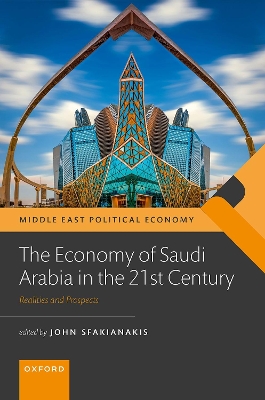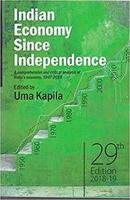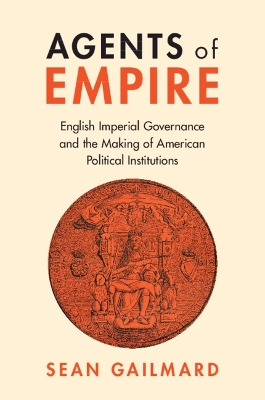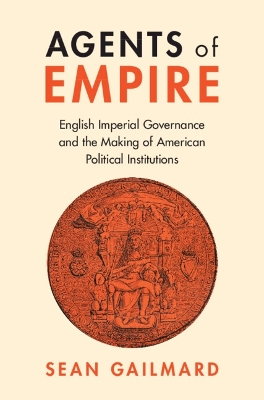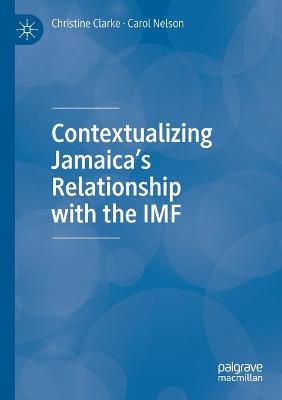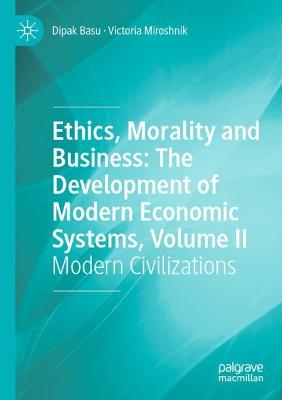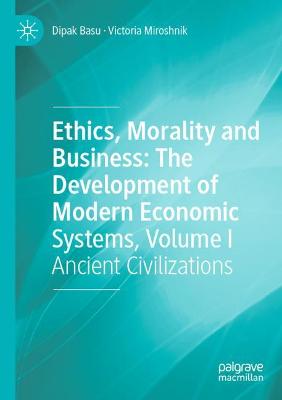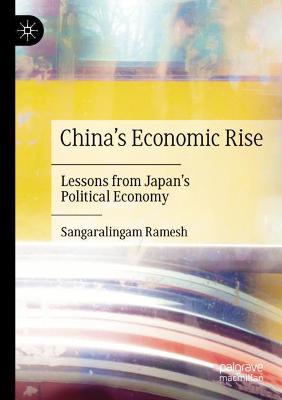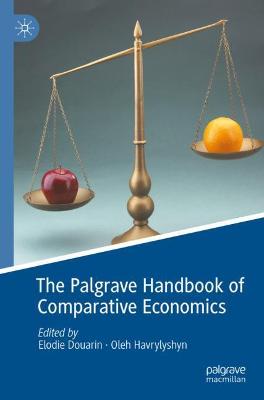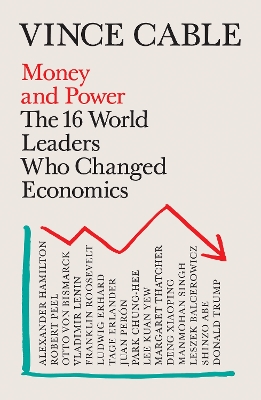Indian Economy: Performance and Policies, 2018-19
 portes grátis
portes grátis
Indian Economy: Performance and Policies, 2018-19
Kapila, Uma
Academic Foundation
05/2024
560
Mole
Inglês
9789332704756
Pré-lançamento - envio 15 a 20 dias após a sua edição
525
Preface
Section - I
Economic Development in
Post-Independent India
Basic Issues in Economic Development
1. Economic Development and Under Development
Introduction
What Does Development Mean
Economic Growth and Economic Development
The New View of Economic Development
Development as a Multi-dimensional Process
Three Core Values of Development
Development, Freedom and Opportunities
The Three Objectives of Development
The Millennium Development Goals
Developed and Underdeveloped Countries
Defining the Developing World
Characteristics of the Developing World:
Diversity within Commonality
Lower Levels of Living and Productivity
Lower Levels of Human Capital
High Rate of Population Growth and Dependency Burden
Higher Levels of Inequality and Absolute Poverty
Greater Social Fractionalisation
Larger Rural Populations but Rapid Rural-to-Urban Migration
Substantial Dependence on Agricultural Production
and Lower Levels of Industrialisation and Manufactured Exports
Underdeveloped Financial and Other Markets
Lingering Colonial Impacts
External Dependence
Nature of Indian Economy
Millennium Development Goals, Targets and Achievements
2. Human Development
Human Development
Human Development Index
Are there Limits to Human Development?
Sustainability, Equity and Human Development
What Makes Development Unsustainable?
The Current State of Human Development
Human Development: International Comparison
Sustainable Development Goals (SDGs)
How are SDGs different from the MDGs
Interlinked Nature of the Sustainable Development Goals
State of Human Development in India
Sustainable Development Goals (SDGs) Targets and Achievements
3. India's Economy at Independence
Introduction
The Relative Importance of Various Industrial Activities
Composition of National Income
The Working Force
The Agrarian Scene
Stagnating Agriculture
Causes
! Regressive Agrarian Structure
! Internal Drain of Capital
! Poor Technology
India's Industrial Production and its Structure
India's Industrial Resources
The Decline of Traditional Industry and the
Development of Modern Industry
Some Positive Features
Growth, Institutional Framework and Policy Regime
4. Economic Planning: Evolution and Strategy
Evolution of Planning
Role of the State as Visualised in the Fifties
Early Experience with Five Year Plans
Changing Perceptions
Role of Planning in a Market Economy
Redefining the Role of State
Relevance of Planning Commission
NITI Aayog: Role and Functions
5. Economic Reforms and Liberalisation
Debate on Liberalisation
The Background
The Macroeconomic Crisis
Rationale for the Reforms
Macroeconomic Reforms
Structural Reforms
Industrial Policy Reforms
Trade Policy Reforms
! Tariffs
! Removal of Quantitative Restrictions
! Indian Customs Single Window Project: 2014-15
! Exchange Rate Reforms
Financial Sector Reforms
! Capital Markets
Fiscal Adjustment and Stabilisation
Economic Progress Post-1991
Impact of Economic Reforms on the Vulnerable Sections
Conclusions
6. Demography and Development
Economic Development and Population Growth
The Theory of Demographic Transition
The Microeconomic Theory of Fertility
How does Population Growth Affect Economic Development?
India's Demographic Transition
Causes of High Birth Rate
Social Factors
Economic Factors
! Poverty
! Lack of Social Security
! Illiteracy, Ignorance and Belief in Fate
! Ineffective Family Planning
Fertility Rate
Causes of Decline in Death Rate
Control of Epidemics
Control of Famines
Improved Medical Facilities
Spread of Maternity Homes
Impact of Economic Development
Measures to Reduce Birth Rate
Concerns about Population Growth
Gender Equity and the Demographic Transition
Population Policy since 1947
National Population Policy, 2000
Objectives
Comparing India to China
The Experience of Kerala and Tamil Nadu
Enabling Factors
India's Demographic Dividend
'Window of Opportunity' for India
Estimated Demographic Bonus for India
India's Response to 'Window of Opportunity'
Demographic Dividend and Related Policy Interventions
Human Resource Development
Public Expenditure and Education Policy
Trends in Social Sector Expenditure
The Future
7. Land Reforms
Objectives of Land Reforms
Effects of Land Reforms on Productivity and Poverty
8. Growth and Structural Changes since 1951
Periodisation of Indian Growth Experience
India's Growth Turnaround
2003-2008: The Best Phase in Growth
Recent Deceleration since 2011
Recent Growth Record
Aggregate Demand
Growth in Gross Value Added
Revised Estimates-January 2016
Quarterly Estimates of GVA at Basic Prices 2016-17
Demonetisation and GDP Growth
Performance on Inclusiveness
Multidimensionality of Inclusion
The Need for Faster Growth
International Comparisons
Growth and Structural Change
Sectoral Growth Trends
Growth and Sectoral Shares, Cross-country
Evidence and Indian Experience
Inter-Regional Disparities in Growth and Development
The Way Ahead
Growth Prospect: An Assessment
Sustainable Development and Climate Change
Section- II
Growth and Distribution
9. Poverty in India
Poverty Estimates
The Selection of Poverty Lines
Economic Growth and Poverty
Growth and Poverty Nexus
Comparison of India and China in terms of Poverty Reduction
Poverty and Inclusive Growth
Non-income Poverty Dimensions
Malnutrition
A Stronger Welfare System and Improved Social Service Provision are Needed
Poverty Alleviation Programmes
Programme for Socially Disadvantaged
Land Reforms
Public Distribution System
Public Investment in Human Capital and Public Goods
Concluding Remarks
10. Unemployment and Employment Perspective
Concepts and Measurement
Characteristics and Structure of the Indian Labour Market
Trends and Pattern of Employment Growth
Growth in Employment, GDP and Employment Elasticity
Patterns of Employment Growth at a Disaggregated Level
Primary Sector
Secondary Sector
Services Sector
Overall Sectoral Pattern
Gender Differentials in Employment Growth
Long Term Perspectives
Labour Market Reforms would Help Boost Employment Creation
Public Employment Programme for the
Unorganised Workers: The Case of NREGA
An Overview of the Scheme
The Performance
Success Stories
Remaining Gaps
Policy Agenda
Skill Development: The Challenge
Employment Perspective
11. Economic Inequality in India
Inequality
Inequality after Economic Reforms
Section- III
Current Perspectives in Agriculture
12. Agriculture: Role and Growth Performance
Importance of Agriculture in National Economy
Linkage between Agriculture and Other Sectors
Agricultural Growth
Role of Institutional & Technological Factors in Agriculture Growth
The New Technology
Characteristics of New Technology
Economic Aspects of New Technology
Green Revolution
Three Phases of Green Revolution
The First Phase, 1966-1972
Debacle and the Second Phase, 1973-1980
The Third Phase, 1981-1990
Reform Period, 1991 to the Present
Deceleration in Agriculture Growth
Instability in Ouput
Regional Disparities and Intra-Personal Disparities
New Technology and Environmental Degradation
Major Factors Affecting the Growth Potential
Lack of Long Term Policy Perspective
Investment in Agriculture and Subsidies
Lagging Research and Development Efforts
Technology Generation and Dissemination
Rising Soil Degradation and Over-exploitation of Groundwater
Degradation of Natural Resources
Subsidies vis-a-vis Investments and Farm Support Systems
Agriculture's Terms of Trade and Farm Price Volatility
Farm Distress
Genesis and Symptoms
National Policy for Farmers, 2007
Emerging Imbalances
Subsidies versus Public Investment
Cereals Production and Build up of Stocks
High Value Commodities: The Future Sources of
Growth in Agriculture
Secondary Agriculture: A Driver for Growth of Primary Agriculture
Reforming the Three 'I's: Investments, Incentives, and Institutions
Investments
Reforming Incentives
Price and Marketing Policy
Reforming Institutions
Marketing and Warehouse Facilities
Reforming Land and Credit Markets
Trade Policies of Agri Products
For a High-yield Agri-trade
Domestic Agri Marketing and Production-Policy Reforms
Agricultural Policy Review (2018)
Key Policy Recommendations
Summing up
13. Agricultural Price Policy, Food Management and Food Security
Agricultural Price Policy
Food Management
Food Procurement Policy
Price and Distribution Controls in the Food Grain Market
Public Distribution System (PDS)
Food Subsidy
Buffer Stock
Food Security
Conclusion
Section- IV
Current Perspectives in Industry and Services
14. Industrial Policy
The Industrial Scene at Independence
Industrial Control Regime 1950s to 1970s
Performance of the Industrial Licensing System
Industrial Policy Reforms 1980s
The Policy Regime in the 1990s
New Economic Policy (1991)
Opening up to Foreign Investment
Public Sector Reforms and Privatisation
Industrial Policy: Recent Policy Initiatives
Industrial Policy Objectives for the Twelfth Plan and Beyond
15. Industrial Growth and Structure since 1951
Industrial Growth
Policy Regimes and Pattern of Growth
Comparative Growth Rates in the 1980s and the 1990s
Relative Contribution of Sectors to Total Production
The Manufacturing Slowdown (1996-2002)
Factors Causing the Slowdown: Some Hypotheses
Cyclical Factors in Industrial Slowdown
Structural Factors
! Infrastructure Constraints in the Industrial Sector
Recovery in Industrial Growth since 2002-03
Recent Industrial Growth 2008-09 to 2013-14 and 2014-15 to 2015-16
Industrial Growth 2015-16 to 2017-18
Competing Explanations for the Trends
Need for Reconfiguring Development State
Why did Manufacturing Sector's Share in Total Employment Stagnate
Why did the Reforms Fail to Deliver the Expected Results?
India's Unique Pattern of Development
Conclusions
16. Micro, Small and Medium Enterprises (MSEs)
Role of SMEs in Global Economy: International Scenario
Defining MSEs: MSMED Act, 2006
Role of MSMEs in Indian Economy
To Generate Large-Scale Employment
To Sustain Economic Growth and Increase Exports
Making Growth Inclusive
Status and Key Challenges
Globalisation and Small Industry Performance
SSI Performance in the Globalisation Era
Performance of the SSI Sector: Pre-liberalisation Period versus Liberalisation Period
Performance of the Registered SSI in the Liberalisation Period: 1987/88-2006/07
Inferences and Conclusions (In the Context of Recent Policy Initiatives)
17. Public Sector in the Indian Economy
The Rationale
Performance of Central Public Sector Enterprises
Output and Capital Formation
Fall in Public Sector Employment Growth
Central PSEs' Profitability
Reasons and Implications
Public Sector and 1991 Industrial Policy
Policies toward CPSEs and their Implementation
Privatisation
Privatisation: Indian Experience since 1991
18. Services in the Indian Growth Process
Introduction
Growth and Sectoral Shares, Cross Country
Evidence and Indian Experience
Services GDP: International Comparison
World Services Trade
Factors Underlying the Services Growth
Services GDP and Gross Capital Formation
State-wise Comparison of Services
India's Services Employment
India's Services Trade
Foreign Direct Investment in India's Service Sector
Liberalisation of Services in India
India and Trade Negotiations in Services
Looking Ahead
19. Foreign Direct Investment
Introduction
Role of FDI
FDI Policy: A Historical Perspective
FDI Inflows and their Impact
India as an Emerging Source of FDI Outflows
Impact of FDI on Growth and Domestic Investment
FDI and Export-Platform Production
Concluding Remarks and Policy Lessons
Policy Lessons
FDI Outlook
Section- V
Financial Sector and External Sector Financial Sector
20. The Financial Sector: Structure,Performance and Reforms
Indian Financial Sector: 1950-1990-From Laissez Faire to Government Control
Banking in India since the 1990s: Towards Modern Competitive Banking
Select Outcomes
Money Markets
Emerging Issues
Financial inclusion
The Insurance Sector Since the 1990s: Opening up the Doors
Capital Market: Uneven Progress in Different Segments
Bond/Debt Market
Equity Market
Mutual Funds (MFs): The Early Reformer
Pension Funds: A Late Entrant
Non-Banking Finance Companies (NBFCs): Checkered Trend
Concluding Observations
External Sector
21. Foreign Trade and Trade Policy
Trade Policy
The Crisis of 1991: A Turning Point
Structural Changes in India's Foreign Trade during 1980s and 1990s
India's Merchandise Trade: 2001 to 2016-17
The Critical Role of Exports
Imports
Composition of Trade
Direction of Trade
Foreign Trade Policy: 2015-2020
Trade Policy Measures
FTP: Mid Term Review and Subsequent Trade Related Policies
Multilateral Negotiations
22. Balance of Payments
Balance of Payments
India's Balance of Payment Trends: 1950-51 to 2015-16
First and Second Oil Shocks of 1973 and 1980
External Payment Crisis of 1991
The Crisis: 1990-1992
India's BoP during 2011-12 to 2017-18
Recent Trade Policy Developments
Managing Capital Flows
External Debt
Currency Composition of External Debt
International Comparison
Foreign Exchange Reserves
Approach, Developments and Issues
Foreign Exchange Rate Policy
External Rate
Global Economic Developments and their Implications for India
Concluding Remarks
23. India and the WTO
World Trade Organization 13-18, 2005)
India and the WTO
India's Participation in WTO Meetings, 2005)
WTO Negotiations and India 2005)
24. Indian Economy Today:An Overview and Comparative Perspective
India's Increasing Importance to Global Growth 13-18, 2005)
The Search for Prosperity
Radical Reform: Rationale and Setting, 2005)
Outlook for Growth, 2005)
Comparative Perspective
Comparisons with the Non-African Poor
India's Decline in South Asia 2005)
India among the BRIC 2005)
Challenges and Prospects
India's Economic Performance in 2017-18 and Prospects
Glossary.
Select Bibliography.
Preface
Section - I
Economic Development in
Post-Independent India
Basic Issues in Economic Development
1. Economic Development and Under Development
Introduction
What Does Development Mean
Economic Growth and Economic Development
The New View of Economic Development
Development as a Multi-dimensional Process
Three Core Values of Development
Development, Freedom and Opportunities
The Three Objectives of Development
The Millennium Development Goals
Developed and Underdeveloped Countries
Defining the Developing World
Characteristics of the Developing World:
Diversity within Commonality
Lower Levels of Living and Productivity
Lower Levels of Human Capital
High Rate of Population Growth and Dependency Burden
Higher Levels of Inequality and Absolute Poverty
Greater Social Fractionalisation
Larger Rural Populations but Rapid Rural-to-Urban Migration
Substantial Dependence on Agricultural Production
and Lower Levels of Industrialisation and Manufactured Exports
Underdeveloped Financial and Other Markets
Lingering Colonial Impacts
External Dependence
Nature of Indian Economy
Millennium Development Goals, Targets and Achievements
2. Human Development
Human Development
Human Development Index
Are there Limits to Human Development?
Sustainability, Equity and Human Development
What Makes Development Unsustainable?
The Current State of Human Development
Human Development: International Comparison
Sustainable Development Goals (SDGs)
How are SDGs different from the MDGs
Interlinked Nature of the Sustainable Development Goals
State of Human Development in India
Sustainable Development Goals (SDGs) Targets and Achievements
3. India's Economy at Independence
Introduction
The Relative Importance of Various Industrial Activities
Composition of National Income
The Working Force
The Agrarian Scene
Stagnating Agriculture
Causes
! Regressive Agrarian Structure
! Internal Drain of Capital
! Poor Technology
India's Industrial Production and its Structure
India's Industrial Resources
The Decline of Traditional Industry and the
Development of Modern Industry
Some Positive Features
Growth, Institutional Framework and Policy Regime
4. Economic Planning: Evolution and Strategy
Evolution of Planning
Role of the State as Visualised in the Fifties
Early Experience with Five Year Plans
Changing Perceptions
Role of Planning in a Market Economy
Redefining the Role of State
Relevance of Planning Commission
NITI Aayog: Role and Functions
5. Economic Reforms and Liberalisation
Debate on Liberalisation
The Background
The Macroeconomic Crisis
Rationale for the Reforms
Macroeconomic Reforms
Structural Reforms
Industrial Policy Reforms
Trade Policy Reforms
! Tariffs
! Removal of Quantitative Restrictions
! Indian Customs Single Window Project: 2014-15
! Exchange Rate Reforms
Financial Sector Reforms
! Capital Markets
Fiscal Adjustment and Stabilisation
Economic Progress Post-1991
Impact of Economic Reforms on the Vulnerable Sections
Conclusions
6. Demography and Development
Economic Development and Population Growth
The Theory of Demographic Transition
The Microeconomic Theory of Fertility
How does Population Growth Affect Economic Development?
India's Demographic Transition
Causes of High Birth Rate
Social Factors
Economic Factors
! Poverty
! Lack of Social Security
! Illiteracy, Ignorance and Belief in Fate
! Ineffective Family Planning
Fertility Rate
Causes of Decline in Death Rate
Control of Epidemics
Control of Famines
Improved Medical Facilities
Spread of Maternity Homes
Impact of Economic Development
Measures to Reduce Birth Rate
Concerns about Population Growth
Gender Equity and the Demographic Transition
Population Policy since 1947
National Population Policy, 2000
Objectives
Comparing India to China
The Experience of Kerala and Tamil Nadu
Enabling Factors
India's Demographic Dividend
'Window of Opportunity' for India
Estimated Demographic Bonus for India
India's Response to 'Window of Opportunity'
Demographic Dividend and Related Policy Interventions
Human Resource Development
Public Expenditure and Education Policy
Trends in Social Sector Expenditure
The Future
7. Land Reforms
Objectives of Land Reforms
Effects of Land Reforms on Productivity and Poverty
8. Growth and Structural Changes since 1951
Periodisation of Indian Growth Experience
India's Growth Turnaround
2003-2008: The Best Phase in Growth
Recent Deceleration since 2011
Recent Growth Record
Aggregate Demand
Growth in Gross Value Added
Revised Estimates-January 2016
Quarterly Estimates of GVA at Basic Prices 2016-17
Demonetisation and GDP Growth
Performance on Inclusiveness
Multidimensionality of Inclusion
The Need for Faster Growth
International Comparisons
Growth and Structural Change
Sectoral Growth Trends
Growth and Sectoral Shares, Cross-country
Evidence and Indian Experience
Inter-Regional Disparities in Growth and Development
The Way Ahead
Growth Prospect: An Assessment
Sustainable Development and Climate Change
Section- II
Growth and Distribution
9. Poverty in India
Poverty Estimates
The Selection of Poverty Lines
Economic Growth and Poverty
Growth and Poverty Nexus
Comparison of India and China in terms of Poverty Reduction
Poverty and Inclusive Growth
Non-income Poverty Dimensions
Malnutrition
A Stronger Welfare System and Improved Social Service Provision are Needed
Poverty Alleviation Programmes
Programme for Socially Disadvantaged
Land Reforms
Public Distribution System
Public Investment in Human Capital and Public Goods
Concluding Remarks
10. Unemployment and Employment Perspective
Concepts and Measurement
Characteristics and Structure of the Indian Labour Market
Trends and Pattern of Employment Growth
Growth in Employment, GDP and Employment Elasticity
Patterns of Employment Growth at a Disaggregated Level
Primary Sector
Secondary Sector
Services Sector
Overall Sectoral Pattern
Gender Differentials in Employment Growth
Long Term Perspectives
Labour Market Reforms would Help Boost Employment Creation
Public Employment Programme for the
Unorganised Workers: The Case of NREGA
An Overview of the Scheme
The Performance
Success Stories
Remaining Gaps
Policy Agenda
Skill Development: The Challenge
Employment Perspective
11. Economic Inequality in India
Inequality
Inequality after Economic Reforms
Section- III
Current Perspectives in Agriculture
12. Agriculture: Role and Growth Performance
Importance of Agriculture in National Economy
Linkage between Agriculture and Other Sectors
Agricultural Growth
Role of Institutional & Technological Factors in Agriculture Growth
The New Technology
Characteristics of New Technology
Economic Aspects of New Technology
Green Revolution
Three Phases of Green Revolution
The First Phase, 1966-1972
Debacle and the Second Phase, 1973-1980
The Third Phase, 1981-1990
Reform Period, 1991 to the Present
Deceleration in Agriculture Growth
Instability in Ouput
Regional Disparities and Intra-Personal Disparities
New Technology and Environmental Degradation
Major Factors Affecting the Growth Potential
Lack of Long Term Policy Perspective
Investment in Agriculture and Subsidies
Lagging Research and Development Efforts
Technology Generation and Dissemination
Rising Soil Degradation and Over-exploitation of Groundwater
Degradation of Natural Resources
Subsidies vis-a-vis Investments and Farm Support Systems
Agriculture's Terms of Trade and Farm Price Volatility
Farm Distress
Genesis and Symptoms
National Policy for Farmers, 2007
Emerging Imbalances
Subsidies versus Public Investment
Cereals Production and Build up of Stocks
High Value Commodities: The Future Sources of
Growth in Agriculture
Secondary Agriculture: A Driver for Growth of Primary Agriculture
Reforming the Three 'I's: Investments, Incentives, and Institutions
Investments
Reforming Incentives
Price and Marketing Policy
Reforming Institutions
Marketing and Warehouse Facilities
Reforming Land and Credit Markets
Trade Policies of Agri Products
For a High-yield Agri-trade
Domestic Agri Marketing and Production-Policy Reforms
Agricultural Policy Review (2018)
Key Policy Recommendations
Summing up
13. Agricultural Price Policy, Food Management and Food Security
Agricultural Price Policy
Food Management
Food Procurement Policy
Price and Distribution Controls in the Food Grain Market
Public Distribution System (PDS)
Food Subsidy
Buffer Stock
Food Security
Conclusion
Section- IV
Current Perspectives in Industry and Services
14. Industrial Policy
The Industrial Scene at Independence
Industrial Control Regime 1950s to 1970s
Performance of the Industrial Licensing System
Industrial Policy Reforms 1980s
The Policy Regime in the 1990s
New Economic Policy (1991)
Opening up to Foreign Investment
Public Sector Reforms and Privatisation
Industrial Policy: Recent Policy Initiatives
Industrial Policy Objectives for the Twelfth Plan and Beyond
15. Industrial Growth and Structure since 1951
Industrial Growth
Policy Regimes and Pattern of Growth
Comparative Growth Rates in the 1980s and the 1990s
Relative Contribution of Sectors to Total Production
The Manufacturing Slowdown (1996-2002)
Factors Causing the Slowdown: Some Hypotheses
Cyclical Factors in Industrial Slowdown
Structural Factors
! Infrastructure Constraints in the Industrial Sector
Recovery in Industrial Growth since 2002-03
Recent Industrial Growth 2008-09 to 2013-14 and 2014-15 to 2015-16
Industrial Growth 2015-16 to 2017-18
Competing Explanations for the Trends
Need for Reconfiguring Development State
Why did Manufacturing Sector's Share in Total Employment Stagnate
Why did the Reforms Fail to Deliver the Expected Results?
India's Unique Pattern of Development
Conclusions
16. Micro, Small and Medium Enterprises (MSEs)
Role of SMEs in Global Economy: International Scenario
Defining MSEs: MSMED Act, 2006
Role of MSMEs in Indian Economy
To Generate Large-Scale Employment
To Sustain Economic Growth and Increase Exports
Making Growth Inclusive
Status and Key Challenges
Globalisation and Small Industry Performance
SSI Performance in the Globalisation Era
Performance of the SSI Sector: Pre-liberalisation Period versus Liberalisation Period
Performance of the Registered SSI in the Liberalisation Period: 1987/88-2006/07
Inferences and Conclusions (In the Context of Recent Policy Initiatives)
17. Public Sector in the Indian Economy
The Rationale
Performance of Central Public Sector Enterprises
Output and Capital Formation
Fall in Public Sector Employment Growth
Central PSEs' Profitability
Reasons and Implications
Public Sector and 1991 Industrial Policy
Policies toward CPSEs and their Implementation
Privatisation
Privatisation: Indian Experience since 1991
18. Services in the Indian Growth Process
Introduction
Growth and Sectoral Shares, Cross Country
Evidence and Indian Experience
Services GDP: International Comparison
World Services Trade
Factors Underlying the Services Growth
Services GDP and Gross Capital Formation
State-wise Comparison of Services
India's Services Employment
India's Services Trade
Foreign Direct Investment in India's Service Sector
Liberalisation of Services in India
India and Trade Negotiations in Services
Looking Ahead
19. Foreign Direct Investment
Introduction
Role of FDI
FDI Policy: A Historical Perspective
FDI Inflows and their Impact
India as an Emerging Source of FDI Outflows
Impact of FDI on Growth and Domestic Investment
FDI and Export-Platform Production
Concluding Remarks and Policy Lessons
Policy Lessons
FDI Outlook
Section- V
Financial Sector and External Sector Financial Sector
20. The Financial Sector: Structure,Performance and Reforms
Indian Financial Sector: 1950-1990-From Laissez Faire to Government Control
Banking in India since the 1990s: Towards Modern Competitive Banking
Select Outcomes
Money Markets
Emerging Issues
Financial inclusion
The Insurance Sector Since the 1990s: Opening up the Doors
Capital Market: Uneven Progress in Different Segments
Bond/Debt Market
Equity Market
Mutual Funds (MFs): The Early Reformer
Pension Funds: A Late Entrant
Non-Banking Finance Companies (NBFCs): Checkered Trend
Concluding Observations
External Sector
21. Foreign Trade and Trade Policy
Trade Policy
The Crisis of 1991: A Turning Point
Structural Changes in India's Foreign Trade during 1980s and 1990s
India's Merchandise Trade: 2001 to 2016-17
The Critical Role of Exports
Imports
Composition of Trade
Direction of Trade
Foreign Trade Policy: 2015-2020
Trade Policy Measures
FTP: Mid Term Review and Subsequent Trade Related Policies
Multilateral Negotiations
22. Balance of Payments
Balance of Payments
India's Balance of Payment Trends: 1950-51 to 2015-16
First and Second Oil Shocks of 1973 and 1980
External Payment Crisis of 1991
The Crisis: 1990-1992
India's BoP during 2011-12 to 2017-18
Recent Trade Policy Developments
Managing Capital Flows
External Debt
Currency Composition of External Debt
International Comparison
Foreign Exchange Reserves
Approach, Developments and Issues
Foreign Exchange Rate Policy
External Rate
Global Economic Developments and their Implications for India
Concluding Remarks
23. India and the WTO
World Trade Organization 13-18, 2005)
India and the WTO
India's Participation in WTO Meetings, 2005)
WTO Negotiations and India 2005)
24. Indian Economy Today:An Overview and Comparative Perspective
India's Increasing Importance to Global Growth 13-18, 2005)
The Search for Prosperity
Radical Reform: Rationale and Setting, 2005)
Outlook for Growth, 2005)
Comparative Perspective
Comparisons with the Non-African Poor
India's Decline in South Asia 2005)
India among the BRIC 2005)
Challenges and Prospects
India's Economic Performance in 2017-18 and Prospects
Glossary.
Select Bibliography.

